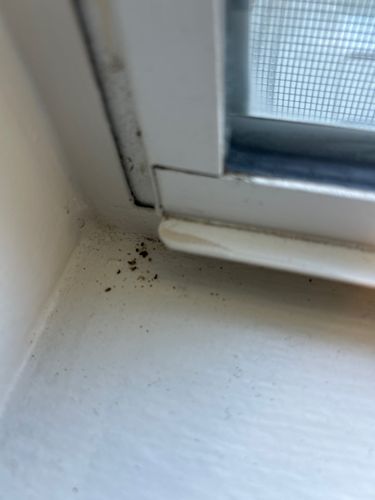Drywood Termite (Frass)
Scientific Name: Kalotermitidae
Order & Family: Order: Blattodea, Family: Kalotermitidae
Size: Workers are about 1/4 to 3/8 inch (6-9.5 mm) long. Reproductive swarmers (alates) are about 1/2 inch (12 mm) long including their wings.

Natural Habitat
Colonies live entirely within dry, sound wood. They are often found in structural timbers, attic spaces, window and door frames, and furniture. Unlike subterranean termites, they do not require contact with the soil.
Diet & Feeding
Cellulose, which is obtained by consuming wood. They excavate galleries and chambers within wooden structures, eating along and across the grain.
Behavior Patterns
The image shows frass (fecal pellets), not the insect itself. Drywood termites live hidden within wood and create small 'kick-out' holes to push their frass out of their galleries. This results in small, conical piles of pellets accumulating on surfaces below the infestation, such as windowsills.
Risks & Benefits
Risks: Significant structural pest. Over time, their feeding can hollow out and weaken wooden structures, leading to costly damage to homes and furniture. Benefits: In natural forest ecosystems, they are beneficial decomposers, helping to break down dead wood and return nutrients to the soil.
Identified on: 11/6/2025